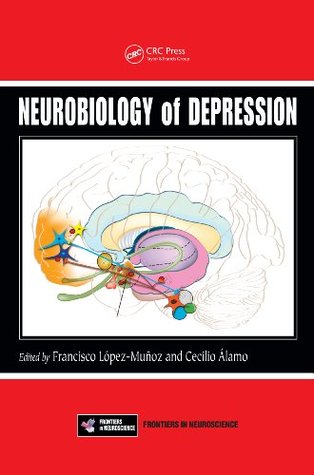Read Neurobiology of Depression (Frontiers in Neuroscience) - Francisco Lopez-Munoz | PDF
Related searches:
Losing the rose tinted glasses: neural substrates of unbiased belief updating in depression.
Current treatments for depression are inadequate for many individuals, and progress in understanding the neurobiology of depression is slow. Several promising hypotheses of depression and antidepressant action have been formulated recently. These hypotheses are based largely on dysregulation of the hypothalamic-pituitary-adrenal axis and hippocampus and implicate corticotropin-releasing factor.
The picture that emerges from neurobiological studies of depression, coupled with epidemiological.
Amazonin read neurobiology of depression frontiers in neuroscience book reviews author details and more at amazonin free delivery on qualified orders summary postmortem tissue samples of people with depression who died as a result of suicide revealed a lower number of astrocytes in the brainthe findings add to the growing body.
Sep 4, 2014 major depressive disorder (mdd) is among the most prevalent of all psychiatric disorders and is the single most burdensome disease.
Aug 23, 2018 dysfunction in mitochondria could be root cause of depression, for new developments of antidepressant drugs: frontiers in neuroscience.
Neurobiology of depression, fibromyalgia and neuropathic pain.
Find helpful customer reviews and review ratings for neurobiology of depression (frontiers in neuroscience) at amazon.
With the collaboration of the most prestigious international specialists in biochemistry, molecular biology, genomics, psychiatry, psychology, and pharmacology, neurobiology of depression discusses the nature of the central nervous system circuits responsible for the modifications of neuronal functioning that lead to depression.
Frontiers in psychiatry neurobiology of depression, fibromyalgia and neuropathic pain.
Neurobiology of depression: road to novel therapeutics synthesizes the basic neurobiology of major depressive disorder with discussions on the most recent advances in research, including the interacting pathways implicated in the pathophysiology of mdd, omics technologies, genetic approaches, and the development of novel optogenetic approaches that are changing research perspectives and revolutionizing research into depression.
Recent pet studies of human depression have focused on serotonergic, dopaminergic, muscarinic, nicotinic, and gabaergic receptors, as well as central processes dependent on monoamine oxidase, phosphodiesterase type 4, amyloid plaques, neurofibrillar tangles, and p-glycoprotein.
I have severe problems with this from severe depression/cptsd and this book taught me about lithium among.
Oct 1, 2019 efforts are continuously made in order to discover dependable biomarkers that clarify the neurobiological mechanisms of psychiatric disorders,.
Jun 7, 2018 major depressive disorder (mdd) is associated with an impairment of episodic memory, but the mechanisms frontiers in neuroscience.
Mar 4, 2013 recent pet studies of human depression have focused on serotonergic, dopaminergic, muscarinic, nicotinic, and gabaergic receptors, as well.
Dec 2, 2020 pdf depressive disorder is a long term, relapsing condition associated with high levels of disability and mortality.
Frontiers in neuroscience lecture alliance for research on schizophrenia and depression young investigator award;.
A new study further highlighting a potential physiological cause of clinical depression could guide future treatment options for this serious mental health disorder. Published in frontiers in psychiatry� researchers show differences between the cellular composition of the brain in depressed adults who died by suicide and non-psychiatric individuals who died suddenly by other means.
Jul 19, 2019 inflammatory cytokines in depression: neurobiological mechanisms and therapeutic implications.
New research linking major depression to a reduced number of cells in the brain that support neuron function, brings hope for targeted treatment options by tania fitzgeorge-balfour, science writer major depressive disorder is a significant medical condition that leads to a variety of serious emotional and physical problems.
She went on to develop an important model of depression based on her findings and opened a new frontier in brain research.
Some possible pathophysiological mechanisms of depression include altered neurotransmission, hpa axis abnormalities involved in chronic stress, inflammation, reduced neuroplasticity, and network dysfunction. All of these proposed mechanisms are integrally related and interact bidirectionally.
Neural foundations of major depression: classical approaches and new frontiers book edited by francisco lopez-munoz, cecilio alamo book neurobiology of depression.

Post Your Comments: